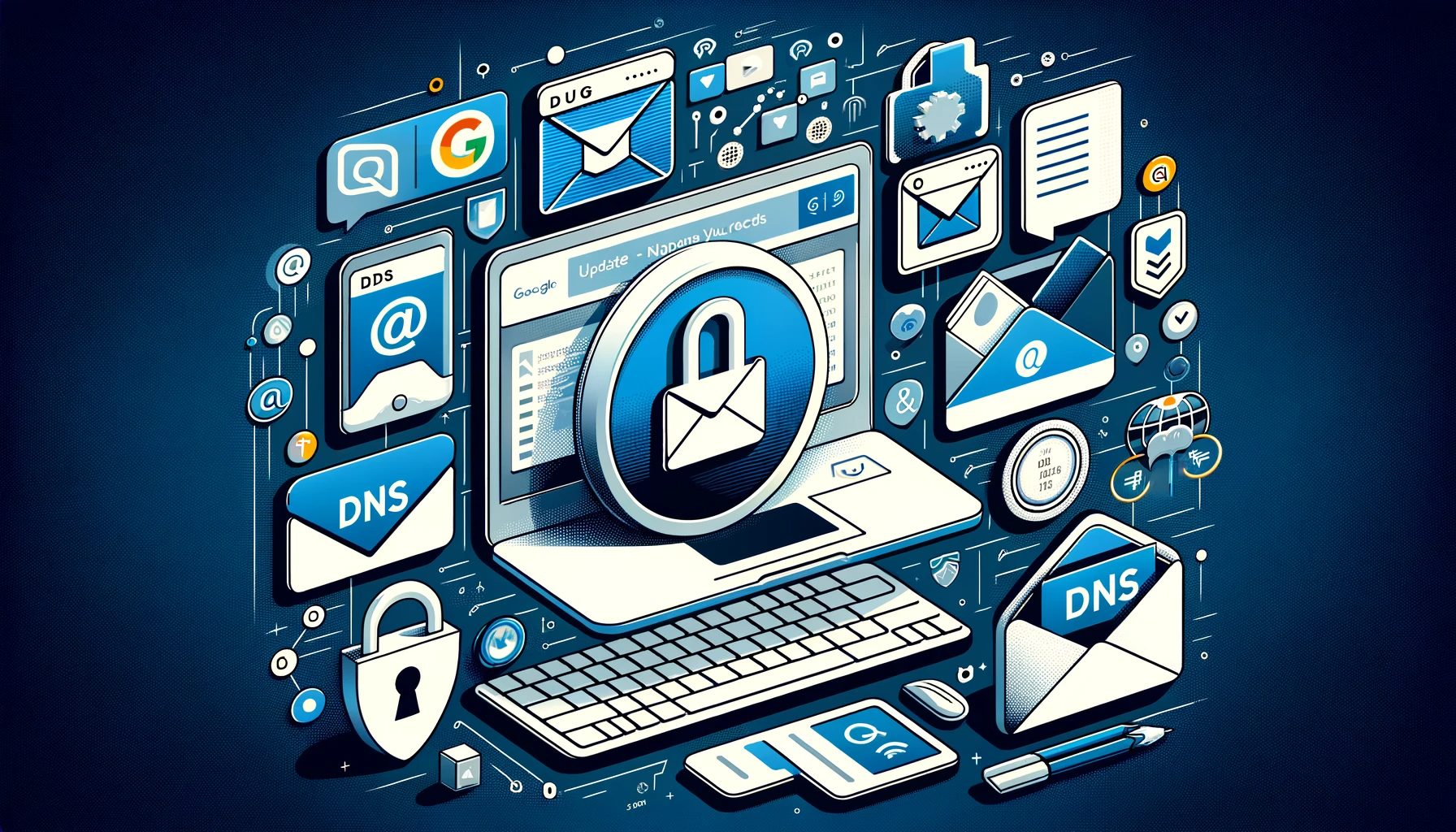Are you prepared for the upcoming changes from Google and Yahoo? Starting 1st February 2024, they’re rolling out significant updates affecting email deliverability. If you haven’t updated your DNS and DMARC records yet, it’s time to take action! Let’s explore why this is crucial for your email marketing campaigns.
- Understanding the Update: Google and Yahoo are tightening their email authentication policies. This means without proper DNS and DMARC configurations, your emails might end up in spam or not get delivered at all.
- The Role of DNS and DMARC: DNS (Domain Name System) and DMARC (Domain-based Message Authentication, Reporting, and Conformance) are key to authenticating your emails. They help verify that you are a legitimate sender, building trust with email service providers.
- Consequences of Not Updating: If your records aren’t up-to-date, your emails could be blocked or marked as spam. This can harm your sender reputation, reduce open rates, and ultimately impact your marketing ROI.
- How to Update Your Records: Updating your DNS and DMARC records isn’t too complex. You’ll need to access your domain’s DNS settings and ensure your DMARC policies align with the new guidelines. If you’re unsure, it’s wise to consult with a tech expert.
- The Benefits of Compliance: By updating, you ensure uninterrupted email delivery, maintain your sender reputation, and enhance email security against phishing and spoofing attacks.
How to Update Your Records: A Step-by-Step Guide
Updating your DNS and DMARC records can seem daunting, but it’s a critical step for ensuring your email campaigns reach your audience. Here’s a simple guide to help you through this process:
a. Access Your Domain’s DNS Settings: Start by logging into the control panel of your domain provider. Look for the DNS settings or domain management area.
b. Locate Your DMARC Record: In the DNS settings, search for a TXT record that starts with “v=DMARC1”. If you don’t have one, you’ll need to create it.
c. Update or Create Your DMARC Record: To align with Google and Yahoo’s updates, modify your DMARC record. The typical format is “v=DMARC1; p=none; rua=mailto:your@email.com“, where ‘p=none’ can be adjusted to ‘p=quarantine’ or ‘p=reject’ based on how strictly you want to enforce the policy.
d. Validate Your Changes: After updating, use a DMARC record checker tool available online to ensure your record is correctly formatted and visible.
e. Monitor the Reports: DMARC sends reports to the email specified in your DMARC record (rua=mailto:your@email.com). Regularly check these reports for issues and adjust your policy as needed.
f. Seek Professional Help if Needed: If you’re not confident in making these changes, it’s wise to consult with an IT or cybersecurity expert. They can ensure your records are correctly set up without disrupting your email deliverability.
Remember, these updates are not just about complying with new standards; they’re about protecting your brand and ensuring your messages are seen by your audience.
Staying ahead of these changes is crucial for any email marketer. Updating your DNS and DMARC records is not just about compliance; it’s about ensuring your marketing messages reach your audience effectively. Don’t wait until it’s too late – act now to safeguard your email campaigns!

